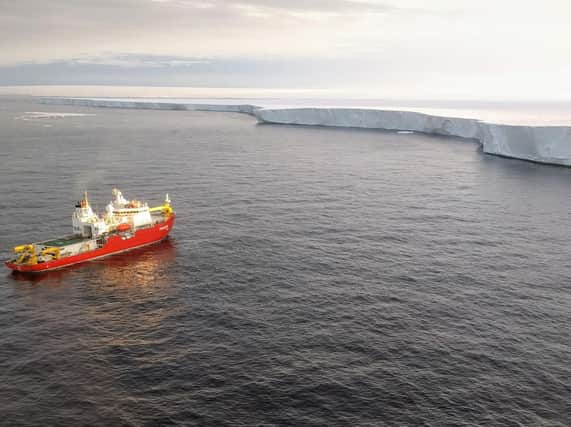University of Leeds scientists warn 14 glaciers in West Antarctica are flowing faster


Using a 25-year record of satellite observations over the Getz region in West Antarctica, scientists from the University of Leeds, reported widespread increases in ice speed across the sector for the first time, with the acceleration of ice away from the land into the ocean rising by nearly 50 per cent.
The vital research from the University of Leeds will help scientists determine whether glaciers in the region may collapse in the next few decades and how this could affect future global sea-level rise.


Advertisement
Hide AdAdvertisement
Hide AdA team of scientists took a detailed look at the ice streams flowing into the ocean along a 1,000km-stretch of coastline known as the Getz region.
The study reported the 14 glaciers in the Getz region are thinning and flowing more quickly into the ocean. Since 1994, they've lost 315 gigatonnes of ice - the equivalent to 126 million Olympic swimming pools of water.
While on average, the speed of all 14 glaciers has increased by almost a quarter with three glaciers’ speeding up by more than 44 per cent.
Lead author and glaciologist Heather Selley, from the University of Leeds, said: “The Getz region of Antarctica is so remote that humans have never set foot on most of this part of the continent.”
Advertisement
Hide AdAdvertisement
Hide Ad“Satellite... records have shown substantial thinning of the ice sheet.
“The high rates of increased glacier speed - coupled with ice thinning – now confirms the Getz basin is in ‘dynamic imbalance’, meaning that it is losing more ice than it gains through snowfall."
The team examined two and a half decades of satellite radar data on ice velocity and thickness.
This included data from the European Space Agency’s (ESA) Copernicus Sentinel-1 mission, which collects a new image every six-days, and NASA’s MEaSUREs data record allowed them to calculate how fast the glaciers have been moving over the 25-year study period.
Advertisement
Hide AdAdvertisement
Hide AdMs Selley highlighted one glacier in the central region of Getz is now flowing at a rate of 669 m/year, a 59 per cent increase in just two and a half decades.
Researchers said the probable cause was "ocean forcing" - where relatively warm deep ocean water is getting under the glaciers' floating fronts and melting them from below.
Pierre Dutrieux, study co-author and climate researcher at British Antarctic Survey, said: "We know that warmer ocean waters are eroding many of West Antarctica’s glaciers, and these new observations demonstrate the impact this is having on the Getz region.
"This new data will provide a new perspective of the processes taking place so we can predict future change with more certainty.”
Advertisement
Hide AdAdvertisement
Hide AdThe report highlights how the widely reported thinning and acceleration observed in the neighbouring Amundsen Sea glaciers, now extends more than 1,000 km along the West Antarctic coastline into Getz.
Dr Anna Hogg, study co-author and climate researcher from Leeds’ School of Earth and Environment, said thanks to high-resolution satellite observations from satellites meant the team could measure localized speed changes in "greater detail" than ever before.
She added for the future "consistent and extensive sampling" of both ice speed and ocean temperature is needed to further understanding of the "dynamic ice loss", which now accounts for 98.8 per cent of the Antarctica’s sea level contribution.
The findings were published in the journal Nature Communications.
____________
Support The Yorkshire Post and become a subscriber today.
Advertisement
Hide AdAdvertisement
Hide AdYour subscription will help us to continue to bring quality news to the people of Yorkshire. In return, you'll see fewer ads on site, get free access to our app and receive exclusive members-only offers. Click here to subscribe.